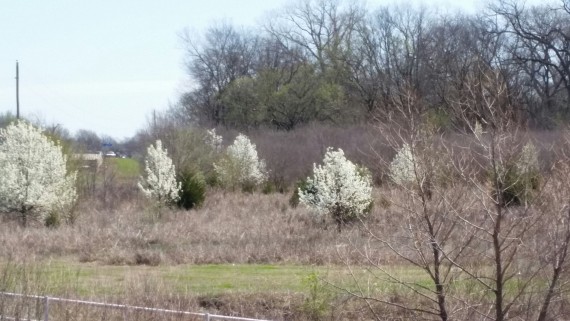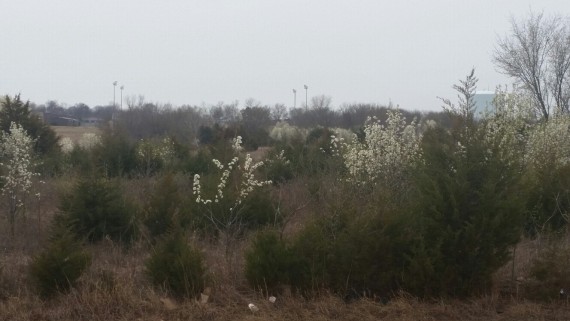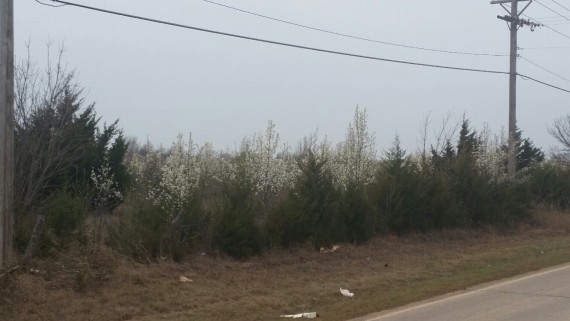Runaway pear trees
Categories: Invasive species Plant Care Gone Bad Trees and shrubs
It’s no secret that the Bradford pear tree has proven to be a problematic tree. While its spring and fall beauty is undeniable and hard to compete with in our climate, its inherently weak branching structure makes it very susceptible to breaking apart as it matures. Wind, ice or heavy snow often end the lives of these trees prematurely.
Even more disconcerting is the tree’s capacity to reproduce from seed. Originally thought to be (or at least sold as) a sterile plant, that is obviously not always the case. Second and (and perhaps even third) generations of these trees are now dotting our minimally maintained landscapes.
On first glance, this appears to be a nice asset to areas like those shown above. They are certainly attractive and give the landscape some nice early color, nicely complementing the blooming redbuds and promising the hope of another spring. However, when you see a situation like this, you can better appreciate the concern:
I apologize for quality of the two photographs above. However, I hope you can still make out the fact that these trees will soon be completely dominating this landscape. Unless something chances soon, the trees will soon be large enough to shade out all sun loving grasses. Only time will tell if they will be able to compete with the other dominating plant on site, the eastern red cedar.
If you are a landowner with some minimally maintained acreage and have pear trees in the area, I suggest you begin to keep an eye out for these escapees and eliminate them before they take over your property.
Two last points, I’m not suggesting you cut down every Bradford pear you see, especially if you are in an urban setting and there is not a place for wild trees to become established. Also note that not all spring white-flowering trees are pears. If you would like to know more about the subject, here’s an article that covers it in depth. You can also contact me if you have additional questions.



While the Bradford’s are lovely this time of year, I find the odor of Bradford’s in bloom to be extremely bothersome.
Excellent point! Their odor (or fragrance depending on your personal plant tastes) is a good ID clue!
I understand your concern, Keith, but I must say that Bradford pears are much less troublesome and invasive than oak trees and lace bark elm. I have a Bradford pear, my neighbor has an oak and somewhere in the neighborhood there is/are ace bark elm. I am constantly battling oak seedlings and millions of lace bark elms. These will grow anywhere and have huge taproots that make them difficult to pull or dig. They do not respond to herbicides (except with a laugh). I consider them nearly as problematic as Kudzu in the southeast. I cannot recall ever having to combat Bradford pear seedlings.